In an era of digitalization, enterprises are under threat because of the occurrence and advancement of cyberattacks. Cybersecurity is more important now than ever before with massive data breaches, ransomware, and more sophisticated persistent threat (APT) attack. Traditional security, as the organizations develop the digital presence, is proving to have weakened against the rapidly developing world of cyber threats. That is where AI (Artificial Intelligence) comes to play as a game changer in the enterprise network security and data security.
AI security solutions are not simply reactive, but they enable the organization to identify cyber threats and mitigate them in the real-time, so it helps to make the defense set during a higher level. The paper at hand explores the significance of AI in net-security, the working mechanism of AI-solutions, and the most efficient security tools using AI, which an enterprise can use nowadays.
Why Network Security is Essential for Modern Enterprises
Almost one hundred percent of all businesses in the current world are dependent on digital infrastructure. Whether it is maintaining communications with customers in terms of purchasing products or managing the supply chain to providing weaponry through business continuity, network security remains the foundation of continuity. Nevertheless, the adoption of new technologies also allows hackers to exploit the weakness of systems in an organization.
The Growing Complexity of Cyber Threats
Cybercriminals are progressively managing to be more influential in their procedures, making use of cutting-edge technologies, such as AI, themselves to avoid the old spans of security. Ordinary threats are:
-
Ransomware: It is malicious software which locks or encrypts information inside an organization, and requires the payment to unlock/decrypt it.
-
Phishing: This refers to deception methods aimed at persuading the user to reveal confidential information, which causes data leakage in most cases.
-
DDoS Attacks: distributed denial-of-service attacks operate to overload network systems leading to unavailability and disruption of business.
-
Advanced Persistent Threats (APTs): These are deceitful, persistent attacks that steal privileged data by accessing networks and channeling useful information over the long run into inappropriate networks.
The Role of AI in Network Security
The implementation of AI is a paradigm shift in improving the network security process as it offers solutions capable of intelligently improving network security by being proactive. In contrast to other customary security devices, AI-based systems can:
-
Detect emerging threats: AI models are trained on huge amounts of data and are constantly evolving to detect a new threat, reveal venerabilities, and abnormal behavior that could be a sign of an attack.
-
Predict future risks: With predictive analytics, enabled by AI, organizations are able to predict the possible risks, based on the patterns identified through previous data, and they can prevent them.
-
Automate response: AI can immediately act against identified threats to isolate infected systems, block malicious traffic or send alerts to the security personnel as opposed to responding manually as in the past.
Key AI Security Solutions for Protecting Your Network
There exist various AI-based security technologies that can assist companies strengthen their security. They include behavioral analytics, machine learning (ML), and deep learning solutions to identify threats and act on the threats in real-time. The following are some of the most effective AI security tools that have the capability of securing enterprise networks against the ever-changing cyberattacks:
Darktrace
Overview: Darktrace is among the most toxic AI-centered cybersecurity platforms, which employs machine learning and artificial intelligence to identify and address the threats on a real-time basis. The AI technology that it uses to self-learn is aimed at identifying abnormal conduct throughout the complete organizational system including endpoint and cloud programs.
Key Features:
-
Autonomous response: The ability of Darktrace to take actions required based on the capabilities of threats without human interference enables it to mitigate the occurrence of threats to an extent that they do not spread in the network.
-
Real-time threat detection: Maintain a constant check on the network traffic and the users and find a possible attempt of security breach.
-
Comprehensive network visibility: Gives a thorough view of the network traffic and vulnerabilities and aids the security teams in taking proactive initiatives.
Best For: Businesses seeking a scalable, self-learning security solution that can adapt to evolving network environments.
CrowdStrike
Overview: CrowdStrike is an endpoint protection and threat intelligence provider in the cloud-native cybersecurity field. It uses AI and machine learning to identify threats and block an attack before its precedents affect the organization.
Key Features:
-
Next-generation endpoint protection: AI-based endpoint monitoring in real-time, detects malware, whereas ransomware, and others.
-
Threat intelligence: Uses information available on various sources to give information on future threats.
-
24/7 monitoring and response: AI algorithms surveil network traffic 24/7 and notify the security department in case of any abnormal activity.
Best For: Enterprises that require robust endpoint defenses and up to date real-time threat defenses.
Vectra AI
Overview: Vectra provides network detection and response(NDR) solutions that utilize machine learning and artificial intelligence to identify a threat to the enterprise networks. Vectra is expert in detecting advanced threats or malicious actors such as APTs and network traversal.
Key Features:
-
AI-powered threat detection: Artificial intelligence takes care of threat detection Searching out attacks in real time, as well as detecting hidden threat and high level cyberattacks.
-
Behavioral analytics: Analyzes network activity, attempting to spot anomalies which would indicate a breach.
-
Automated threat prioritization: AI automates the process of security events evaluation and prioritization in accordance with its impact, so the response is quicker.
Best For: Coimbatore Auto Organisations that desire sophisticated threat monitoring of sophisticated network settings.
Palo Alto Networks Cortex XDR
Overview: Palo Alto Networks Cortex XDR is an holistic AI security system that integrates threat intelligence, artificial intelligence and behavioral analytics to offer real-time network and endpoint security.
Key Features:
-
Advanced threat intelligence: AI-driven global threat intelligence allows them to identify the changing attacks.
-
Integrated security: End point security, network traffic signals and cloud security being brought into one framework.
-
Automated response: AI-based automation decreases the response times of the security incident isolating the affected systems and blocking the malicious activity.
Best For: A business seeking an AI-enhanced security and safety package that combines multiple defense systems in one.
SentinelOne
Overview: SentinelOne provides autonomous endpoint protection through AI-enabled cybersecurity platform. It implements machine learning algorithms that monitor and react to threats to be sure that the systems are not compromised by malware, ransomware, and sophisticated attacks.
Key Features:
-
Autonomous detection and response: The AI project SentinelOne can independently identify threats and respond to them without involving people.
-
Full visibility and control: Presents comprehensive monitor expertise with regard to the network activity and threat.
-
Cloud-native architecture: Makes it cloud friendly and easily mergeable with cloud systems.
Best For: The organizations that require a high level of autonomy when endpoints are involved in the process of endpoint security and are willing to intervene minimally.
| AI Security Solution | Key Features | Best For |
|---|---|---|
| Darktrace | Self-learning AI, real-time threat detection, autonomous response | Scalable, adaptive security for large enterprises |
| CrowdStrike | Endpoint protection, threat intelligence, real-time monitoring | Enterprises needing strong endpoint protection and threat intelligence |
| Vectra AI | Network visibility, detection of advanced cyber threats, automated prioritization | Protection against APTs and sophisticated attacks |
| Palo Alto Networks Cortex XDR | Integrated threat intelligence, advanced behavioral analytics, automated response | Comprehensive security across endpoints and networks |
| SentinelOne | Autonomous detection and response, full visibility, cloud-native architecture | Autonomous endpoint protection with minimal intervention |
Benefits of Using AI Security Solutions
Implementing AI-based security has a lot of benefits to business organizations that want to do more to protect their network. The following are some of the important advantages of employing AI in cybersecurity:
Improved Threat Detection and Prevention
AI can improve threat detection by performing comprehensive analysis of network traffic, user and security-related data to detect trends of malicious behavior. Machine learning models are also trained to identify both familiar and unfamiliar threats, a fact that gave the organizations a fairly proactive defense system.
Reduced Response Time
The response time of threats identified by AI-based security is also greatly diminished as AI has a chance to respond to the threats automatically in real-time. Such accelerated response allows limiting the harm of cyber attacks and guaranteeing the businesses do not stop running due to lengthy malfunctions.
Scalability and Efficiency
The use of AI systems will require no extra resources to deal with massive amounts of data and network settings. Such scalability enables organizations to grow their digital landscape and have a strong security.
Cost-Effective
| Benefit | How AI Improves Security | Business Impact |
|---|---|---|
| Improved Threat Detection | Learns from vast datasets to detect both known and unknown threats | Proactive threat identification, reducing risk |
| Reduced Response Time | Automates response to detected threats in real time | Faster containment of threats, minimizing potential damage |
| Scalability and Efficiency | Handles large volumes of network data without compromising performance | Cost-effective, supports business growth |
| Cost-Effective | Reduces the need for manual intervention and large cybersecurity teams | Cuts down on security operation costs and improves ROI |
Challenges in Implementing AI Security Solutions
As potent as AI might be in terms of network protection, there are certain issues regarding the implementation of AI-based security measures:
Integration with Existing Infrastructure
The use of AI security apparatus in integration with the pre-existing IT structure and legacy systems can be complicated. Most organizations can be challenged with the compatibility issues related to the integration of AI-powered security stations and legacy security devices.
Data Privacy and Compliance
The importance of AI security systems depends entirely on the data flow; thus, it could lead to data security concerns and regulatory duties about the regulations like GDPR or CCPA. That is crucial to businesses to make sure AI models are used responsibly and sensitive data is not put at risk.
Skills Gap
Cybersecurity tools run by AI are products that need a specific knowledge and expertise to implement and operate. Lack of experienced cybersecurity specialists with AI and machine learning skills might also complicate the task of businesses that are purchasing these solutions.
High Initial Costs
Security solutions that work on artificial intelligence also tend to entail high initial costs in the form of software, infrastructure, and training. In the case of smaller businesses, the price of the AI security tools may act as an obstacle to entry.
Best Practices for Implementing AI Security Solutions
The businesses need to adhere to the best practices to guarantee the successful implementation and functioning of AI security tools and secure their network against evolving cyber threats. The following are some of the vital strategies:
Integration with Existing Systems
Although AI security solutions have strong functionality, the compatibility with legacy systems is an important factor. AI tools must complement existing security technologies, including firewalls, intrusion detection systems (IDS), and endpoint protections solutions, to offer a multi-layered security approach.
Best Practice: Select AI security solutions which can work with the current infrastructure. The implementation of cloud-based AI platforms may not require extensive implementation because they are usually configured to easily integrate with commonly used security systems.
Example: Keep in mind that most organizations use such a combination of AI and traditional SIEM systems as AI in order to have a stronger presence in real-time, and the SIEM helps to aggregate data and manage compliance reporting.
Continuous Monitoring and Real-Time Data
The best way to deploy AI security solutions is to ensure that it carries out analyses actively and in real-time, constantly running. Cyber threats keep evolving, thus security tools should be adaptive, and capable of responding to the emerging threats without the need of manual updates.
Best Practice: New threat intelligence feeds should be updated in AI models on a regular basis. Apply machine learning-based models that allow responding to new threats in accordance with real-time information and experience.
Example: Data aggregation and real-time monitoring tool, such as Darktrace, allows organizations to monitor network traffic of all endpoints in order to spot suspicious activity in real time.
Human Oversight and Collaboration
Artificial intelligence is a strong tool but not the one that can replace human knowledge. The security teams are to collaborate with AI-based systems, tracing the alerts, confirming the machine-decisions, and managing high-priority incidents involving human judgment.
Best Practice: Deploy a hybrid model in which AI is used to perform the prosaic threat detection/threat response tasks and human analysts can take over in cases where there is a complex threat or the stakes are high.
Example: AI-based tools, such as SentinelOne, can be used to raise a suspicious activity that can be assessed by the security analysts that can offer context and relevant action, which can improve decisions..
Regular Security Audits and Vulnerability Testing
Although AI may perform autonomic detection and response on its own, testing the security infrastructure and auditing it regularly are essential measures that should be taken to guarantee its efficiency. Vulnerability analysis will include periodic tests of vulnerability and penetration at the system to reveal any weak areas in the system.
Best Practice: Conduct periodic security audit to appraise the performance of the AI and to make sure that the threat detection models are current. Also, perform run penetration tests to verify possible flaws that the AI models could fail to detect.
Example: Simulating attack tests may also be conducted to determine the efficiency of AI systems in dealing with real-life threats so that they can act as desired in actual attack situations.
Employee Training and Awareness
Security AI software can become effective only when employees will be trained how to use it correctly. Security teams ought to get comprehensive instructions on the operations of AI tools, interpretation of alerts supplied by the tools, and maximizing the advantages of the tools.
Best Practice: Dedicate continuous training and awareness sessions to IT personnel with an emphasis on familiarizing them with the potentials of the AI security tools and the responses to various types of alerts.
Example:
| Best Practice | How to Implement | Business Benefit |
|---|---|---|
| Integration with Existing Systems | Choose AI solutions that integrate with current infrastructure | Seamless deployment and improved security coverage |
| Continuous Monitoring & Real-Time Data | Use AI models that update with new threat intelligence regularly | Proactive threat detection and rapid response |
| Human Oversight & Collaboration | Implement AI-driven automation with human validation of critical alerts | Better decision-making and reduced false positives |
| Regular Audits & Testing | Perform vulnerability assessments and penetration tests | Ensures AI systems remain effective and identify vulnerabilities |
| Employee Training | Offer ongoing training to staff on AI tools and threat response | Maximizes the value of AI security solutions and enhances team efficiency |
Summary
AI is transforming network security by providing enterprises with the opportunity to detect, prevent, and respond to cyber threats in the most efficient way possible. With the help of the latest AI technologies such as machine learning, predictive analytics, and autonomous response systems, companies will be able to improve their security stance, cut response time, and be several steps ahead of cyber-criminals overall.
Although, the process of applying AI to network security is not accompanied without any problems, namely challenges in the integration process, the issues with privacy, and costs, the advantages certainly exceed the disadvantages. Organizations can make sure that they adopt best practices and mitigate possible barriers besides keeping up with emerging trends to put them in a favorable position to implement the best AI security solutions to guard networks.


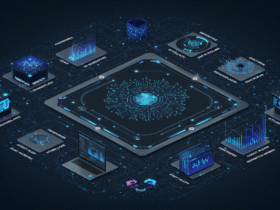




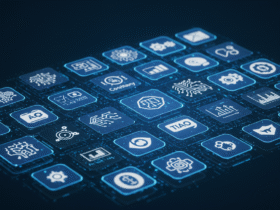



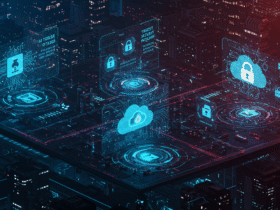

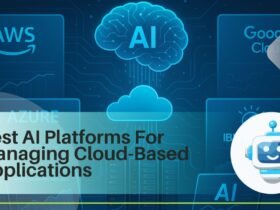





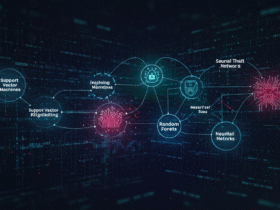


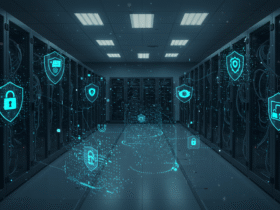

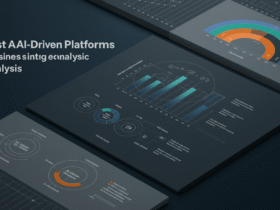


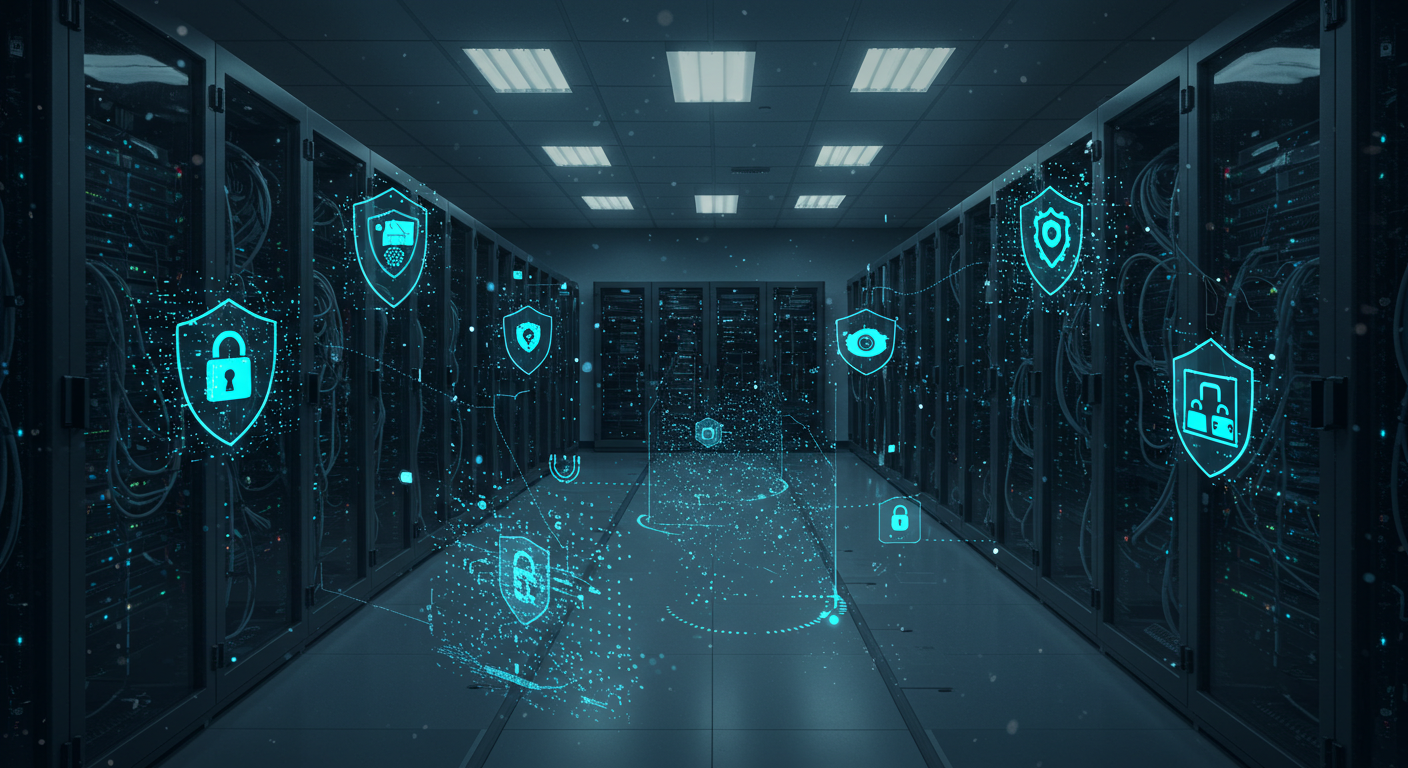

Leave a Reply